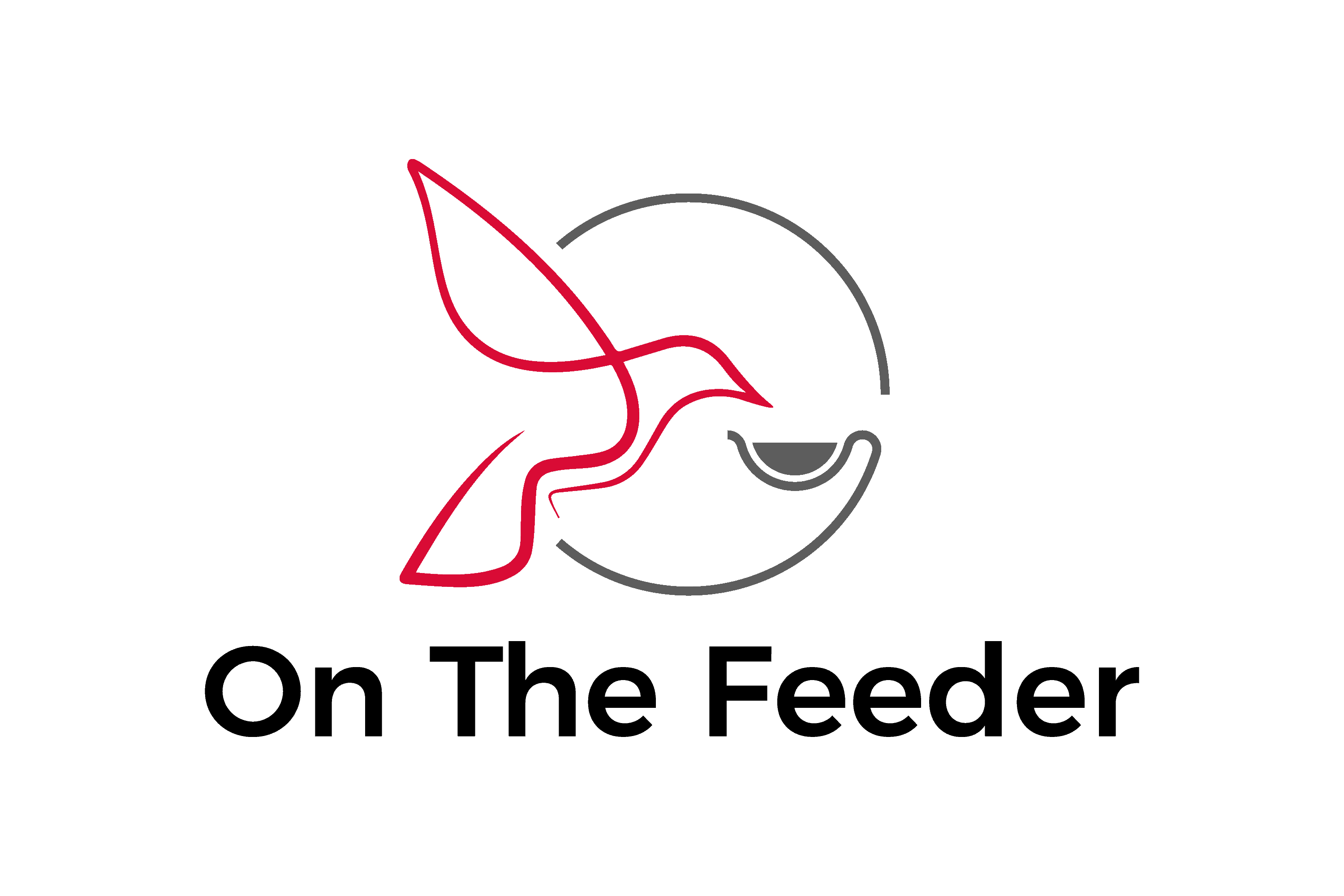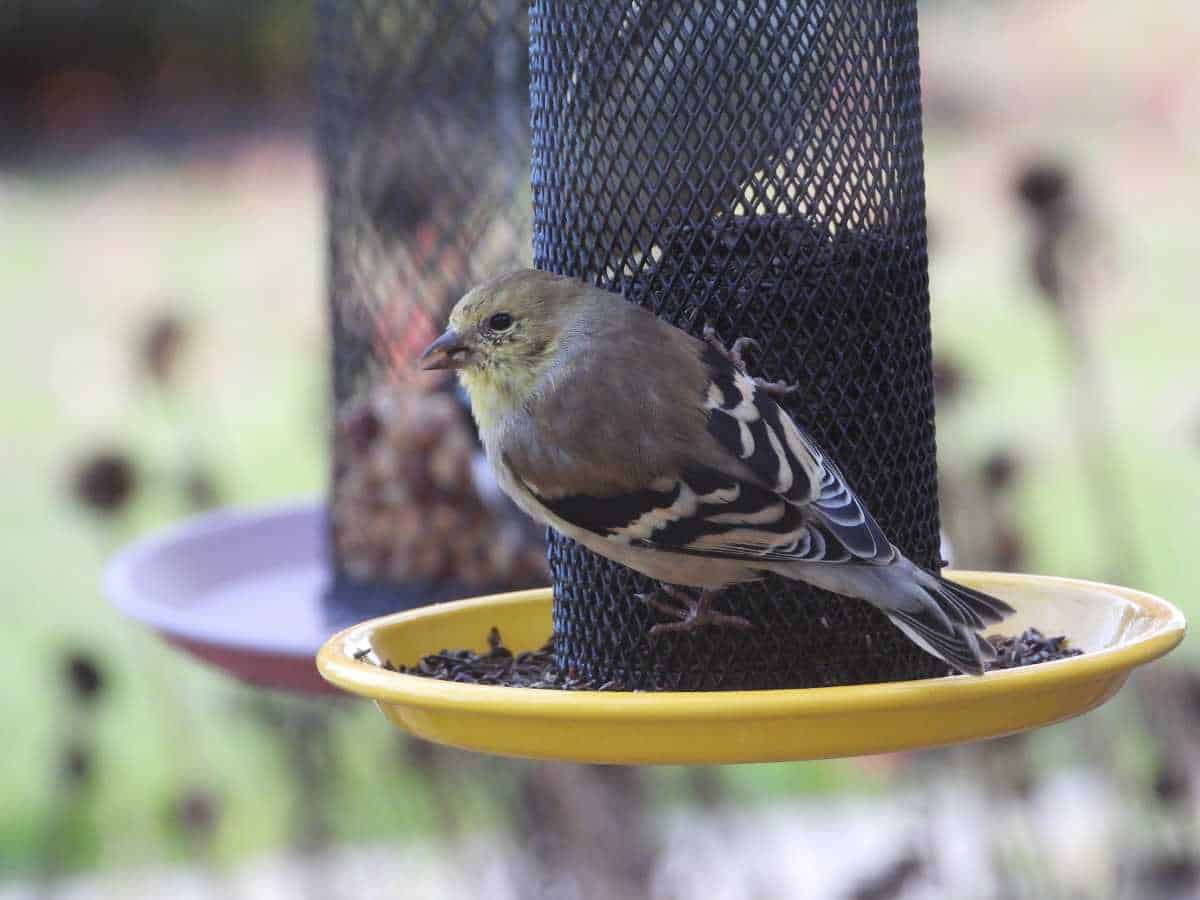Why won’t the birds eat my thistle seed? A common question and one that is easily answered and fixed!
Birds won’t eat your seed for one or more of these common reasons:
- The seed is stale
- Feeder issues
- Environmental factors
- Competition
- Food preferences
I’ll explain why birds might be skipping your feeder and give you four effective ways to bring them back for your seeds!
This article was reviewed by Tammy Poppie, an expert in attracting birds to her yard using thistle seed since 1999. Her experience and knowledge validate the information presented here.
Table of Contents
Reasons Birds Avoid Your Thistle | Strategies to Fix | Birds that Prefer Thistle | Thistle vs. Nyjer
5 Common Reasons Birds Might Avoid Thistle Seeds
The first step to getting birds to eat your seed is to figure out why they aren’t eating it now. The solution likely lies in one of the 5 common problems listed below.
- The seed is stale
- Feeder issues
- Environmental factors
- Competition
- Food preferences.
1. The seed is stale
The main reason birds avoid your food is due to its age and staleness. Fresh seed, containing appealing oils, deteriorates in quality, becoming dry and unappealing to birds within a few months.
Here are some simple ways to determine the freshness of your seed:
- Visual: Look for shiny, black seeds; dull or grayish seeds may be stale.
- Feel: Seeds should be oily and smooth, not dry or crumbly. Crush a seed with your fingernail and you’ll know if the oil is still there.
- Smell: Seeds should smell natural and slightly nutty, not off or rancid.
- Clumping: Seeds should flow freely without clumps, which suggests moisture.
- Expiration Date: Check for and adhere to the use-by or expiration date on the original package.
2. Feeder Issues
- Feeder Design: Thistle seeds are really small and can fall out of feeders if the holes are too big. You need a special feeder for these tiny seeds.
- Attracting Different Birds: Some feeders are made for certain birds. If your feeder isn’t right for small birds that like thistle seeds, big birds might come instead and scare the small ones away.
- Location: If you put the feeder where there’s a lot of noise or movement, little birds might not come. They like quiet and safe spots.
- Cleanliness: Birds don’t like dirty feeders. If the feeder isn’t clean, they won’t come, even if it has their favorite thistle seeds.
3. Environmental Factors
When there’s plenty of seed naturally available, your food is likely to go untouched. If birds aren’t using your feeders, they may be getting enough food already!

Major changes to the environment around your backyard could be responsible too.
- Has there been especially harsh weather recently?
- Did a popular nesting tree get taken down?
If you’re noticing fewer birds than usual in your backyard, this might be the reason.
Also, trying to attract birds to a backyard with predators present is a recipe for disaster. Whether it’s birds of prey or an outdoor cat, predators are guaranteed to keep small birds away.
4. Competition
5. Food Preferences
4 Proven Strategies to Make Your Thistle Irresistible
1. Improve Seed Freshness & Quality
Start by buying fresh seeds. Especially if you’re putting out seed that’s months or even years old, it’s no wonder birds aren’t eating it up.
Buy small batches of fresh seed every couple of months instead of a massive bag that won’t get used up for years.
Also, don’t keep your seeds in the bag they came in. Store your seeds in airtight containers in cool areas to keep them fresh.
2. Feeder Adjustments
These seeds are tiny, meaning they don’t work well with many common feeders. Some birds prefer different feeders to suit their perching style (oftentimes upside down). Your best option for getting birds to eat thistle seed and support a style perch includes:
- Tube Feeders
- Metal Mesh Feeders
- Fabric Mesh Feeders
Because dirty feeders will get ignored, be sure you also clean them regularly. Like bad seeds, dirty feeders can also get birds sick, so it’s important to clean them often.
Also, moving your feeders can make a huge difference in how interested birds are. Putting your feeder in a quieter, safer area will make it much more attractive to small birds.
Recently I’ve been experimenting with seed cylinders. The Finch Favorite Birdseed Cylinder from JC’s Wildlife contains Nyjer seed and sunflower chips. The finches in my yard love it so it must be fresh!
Use code OTF2024 for 10% off your order at JCS Wildlife.
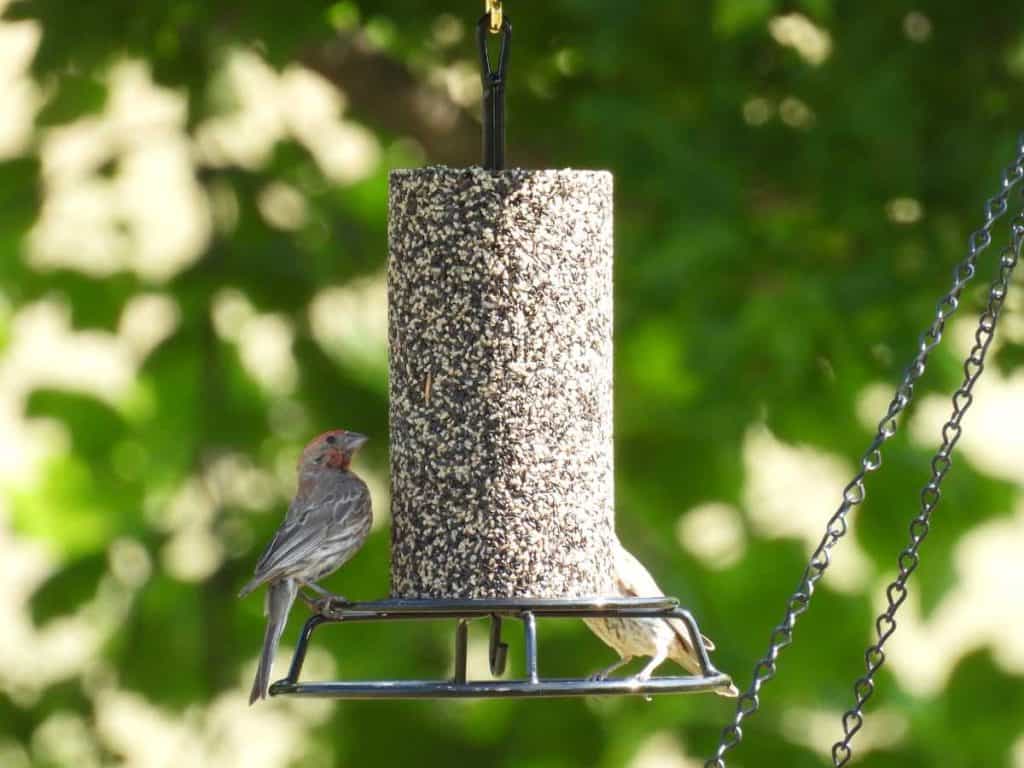
3. Address Environmental and Competitive Factors
As mentioned, location can be a major reason small birds aren’t eating your food. Use the plants in your yard to your advantage here. Shrubs and trees can provide natural cover for feeders to make them safer for small birds.
Multiple Feeders
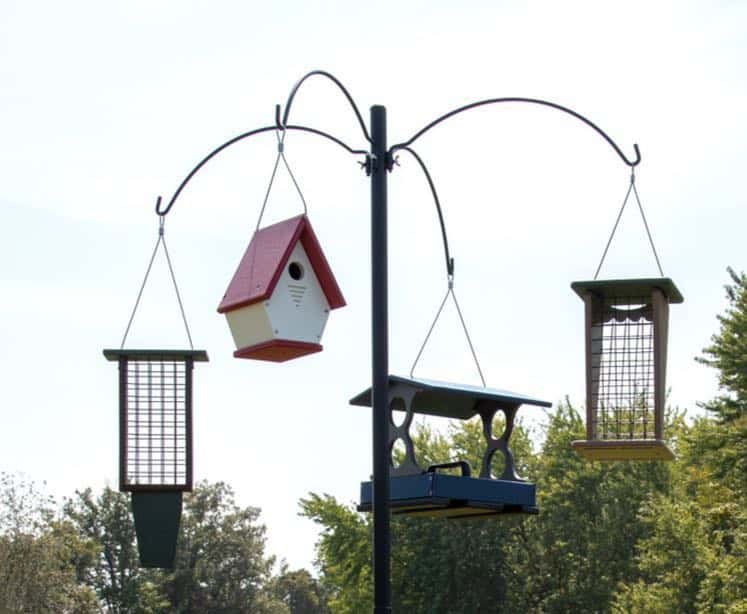
If you’re noticing a lot of larger birds in your yard, get a couple of different feeders to reduce competition. Use a platform feeder for large birds and a tube feeder for smaller birds. This way, there will be enough food to go around for everyone.
This will vary depending on what birds you get in your backyard and how they behave. Keep an eye on what’s happening and use your judgment to make necessary changes.
Protection from Predators
If natural predators are an issue, there are a few things you can do to deter them like providing trees and shrubs for cover. This allows the tiny birds a safe place to wait while they determine the feeder is safe to approach and a place to quickly dart out to in case of danger.
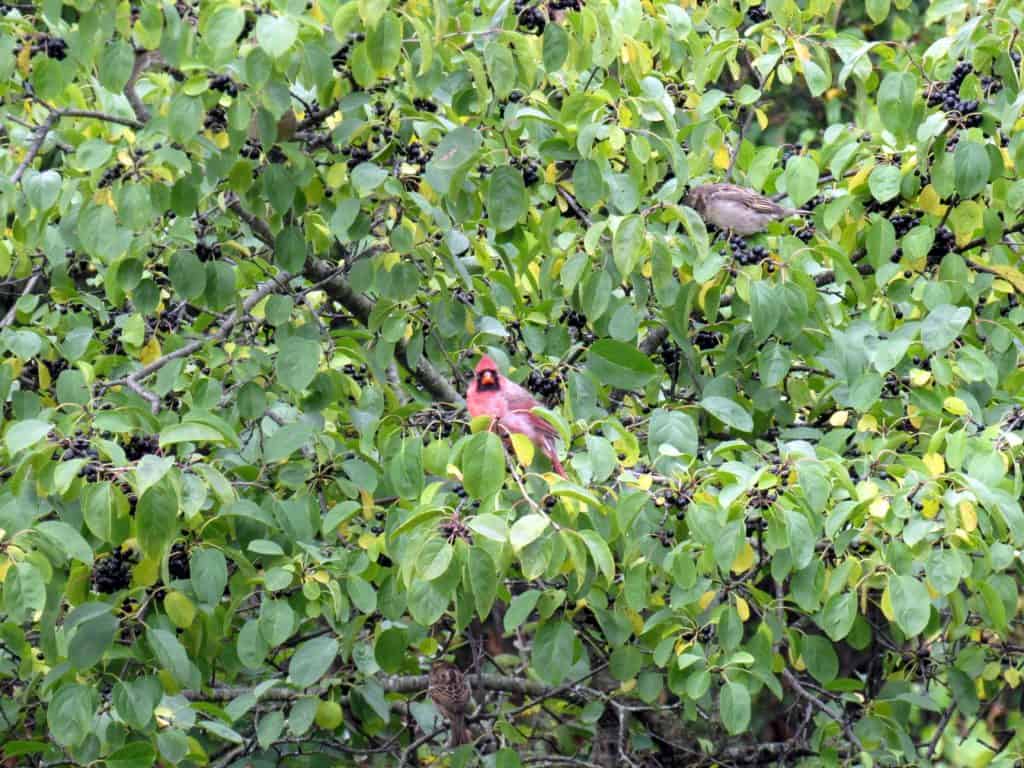
Putting up scarecrows is another prey deterrent. Just remember birds of prey will get used to scarecrows in a single location so move them around every few weeks.
Also, if you have any outdoor cats, keep them inside if you want to keep your backyard safe for the birds!
4. Introducing New Foods
Have you been putting out seeds for a while and only recently started offering thistle? If so, you may be confusing the birds in your backyard.
Consider slowly adding more and more of it to a seed mix the birds are already used to. Or, buy a premade mix that includes these seeds alongside other finch-friendly seeds.
For a mix that already includes thistle seed, check out Cole's Finch Friends Bird Seed from JC's Wildlife. Use code OTF2024 for 10% off your order at JCS Wildlife.
Birds that Prefer Thistle Seed
Thistle seeds are well-known for attracting small birds, like finches. As you can see from the photo above, American goldfinches love it!
Below are more species that adore this seed:
- California Quail
- Chickadees
- Black-capped Chickadee
- Boreal Chickadee
- Carolina Chickadee
- Chestnut-Backed Chickadee
- Mountain Chickadee
- Dark-Eyed Juncos
- Doves
- Inca dove
- Mourning dove
- Finches
- American Goldfinch
- House finch
- Purple finch
- Cassin’s finch
- Rosy finch
- Pine Siskins
- Redpolls
- Common redpoll
- Hoary redpoll
- Sparrows
- American tree sparrow
- Chipping sparrow
- Fox Sparrow
- Song sparrow
- Tufted titmouse
Birds that won’t eat thistle seed
Not all birds are attracted to it. Birds that primarily eat fruits or insects, for instance, tend to bypass this seed in favor of their preferred food sources. This includes species like:
- Orioles
- Waxwings
- Hummingbirds
Thistle vs. Nyjer: What’s the difference?
The terms “thistle” and “Nyjer” are often used interchangeably, but they’re very different.
What we’re actually referring to is Nyjer (Guizotia abyssinica). It appears Nyjer took on this name because of its similarity to wild thistle – commonly eaten by finches and other animals.
Thistle Seed
True thistle seed comes from plants in the family of the same name.
Field (Cirsium discolor) and Canada thistle (Cirsium arvense) are two North American plants from this family.
Nyjer Seed
Nyjer (Guizotia abyssinica)
Nyjer, Niger, or Nyger (Guizotia abyssinica) is a small, black seed from the Nyjer plant, which is native to Ethiopia and Malawi. The seed is not derived from a thistle plant.
**For clarity, I’ll be referring to Nyjer as “thistle seed” throughout this article since that is what it’s most commonly referred to in the birding world. **
Next Steps
Getting birds to eat thistle seed can be as simple as making a few adjustments in your yard. Some fixes are to change the seed you’re using, move your feeder, or hang a different feeder.
Consider whether your problem lies in the seed itself, the feeder, your yard environment, competition among other birds, or you just need to better acclimate the birds to the food. You may discover there are multiple reasons causing birds to abandon your yard.
If one solution doesn’t resolve the problem, try another.
References
Kaufman, K. & K. (2023, November). Ask the experts. Birds & Blooms Extra!, 48–48.
Comment below if you have suggestions to share.
